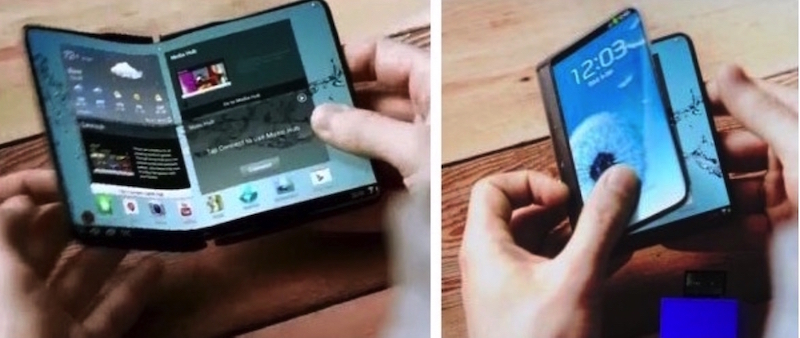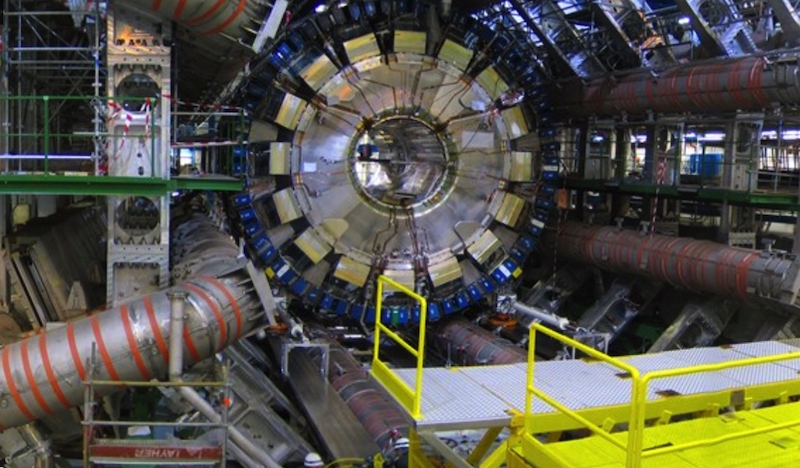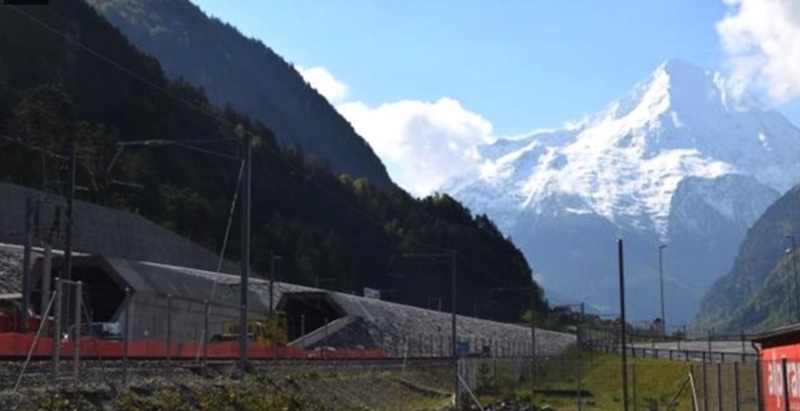2016-06-21 (Tuesday)
Today, I learned that:
The world is changing and besides the traditional places where advanced technology is being used we now also see countries like Rwanda in Africa and the United Arab Emirates (UAE) in the Middle East.
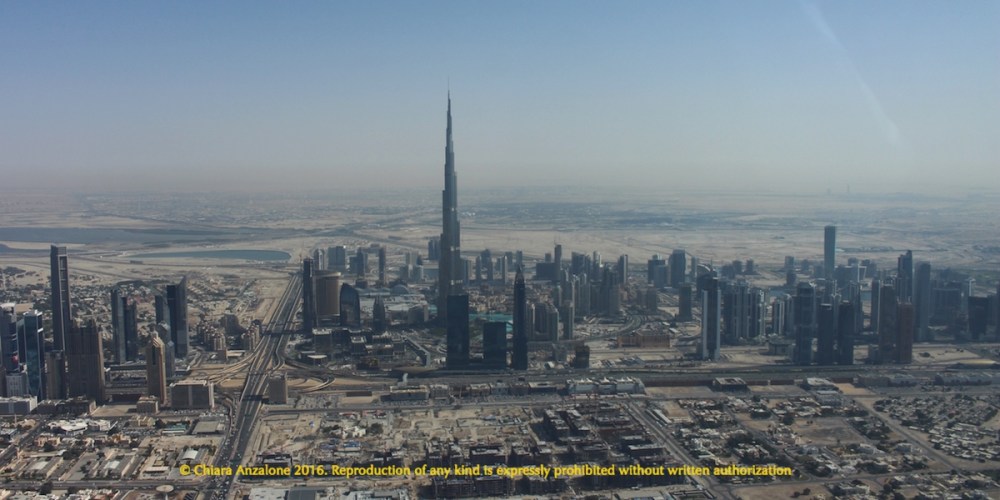
Photo of the city of Dubai, with the world’s tallest building, the Burj Khalifa, 828 meters, in the center. Courtesy of Chiara Anzalone.
One of the seven emirates in UAE is Dubai, and Dubai is also the name of its capital. My deepest gratitude to my friend Chiara, who took this impressing header photo of Dubai. It shows the world’s tallest building, the Burj Khalifa, 828 meters, in the center. See more about Dubai in reference #1 below. Today, I want to talk about recent technologies that are being employed in Dubai.
The first one deals with construction of buildings. Besides being the city with the tallest building in the world, now there has been demonstrated a method similar to 3D printing to be used in the construction process. But instead of resulting in traditional small 3D printed objects, this time it is a complete office building. Using a printer with dimensions of 6 m x 36 m x 12 m, in 17 days was built a 250 m2 fully functional office building, at half the cost of traditional methods. Initially it is the temporary headquarters of Dubai Future Foundation, and it was opened one month ago. Reference #2 below gives more details.
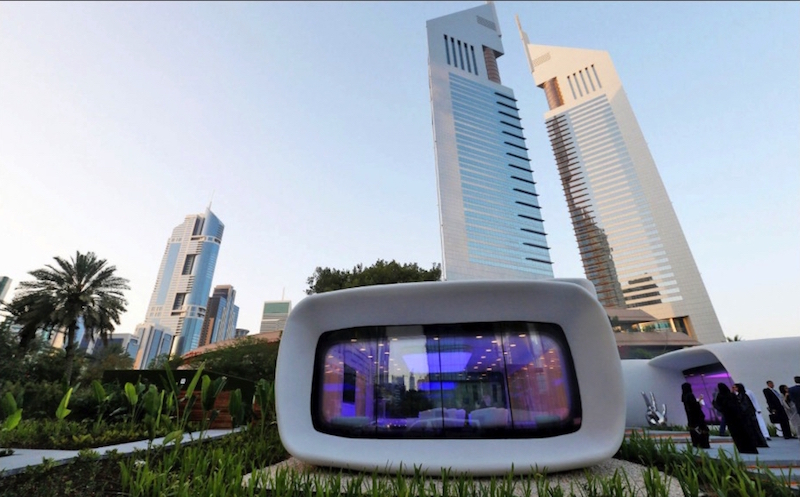
The world’s first 3D-printed office. Photo by REUTERS/Ahmed Jadallah
Another field where Dubai is showing its advanced state of technology is in a communications technology abbreviated Li-Fi. Most of you know what Wi-Fi (Wireless Fidelity) is, a technology which permits that we connect our computers and smartphones to the internet via hotspots. However, one of the drawbacks with Wi-Fi, as compared to wired connections, is the slower speed and susceptibility to interference from other sources.
Li-Fi (Light Fidelity) is similar to Wi-Fi, but instead of radio waves it uses infrared light to convey the information. It can therefore be used in electromagnetic sensitive areas such as in aircraft cabins, hospitals and nuclear power plants without causing electromagnetic interference. Typically one can also expect data transmission speeds 100 times higher than when using Wi-Fi. Reference #3 below offers further information about Li-Fi. The communications provider du has recently performed a trial in Dubai and the result confirmed that Li-Fi can be a major communications technology in the near future, as described in reference #4 below.
Finally, speaking about light, today was inaugurated MAX IV in Lund in the south of Sweden. It permits researchers to make their investigations in the strong synchrotron radiation. Listen to Radio Sweden’s program in reference #5 and read more about synchrotron in reference #6 below.

The Max IV installation in Lund. Photo by Perry Nordeng
… That’s what I learned in school !
Refs.:
1: Dubai
2: Dubai opens the world’s first functioning 3D-printed office
3: LiFi
4: du trials Li-Fi, 100 X faster internet than WiFi
6: Synchrotron



